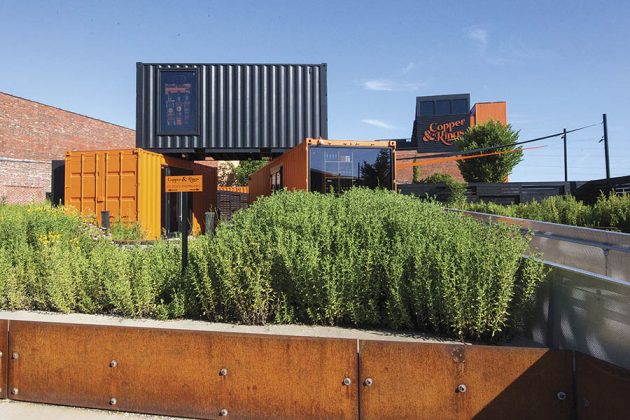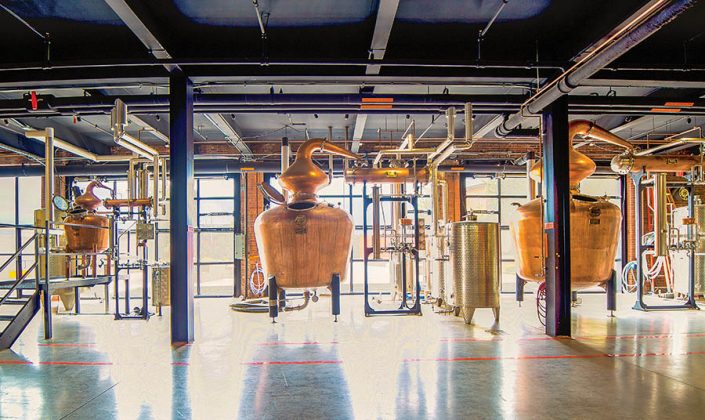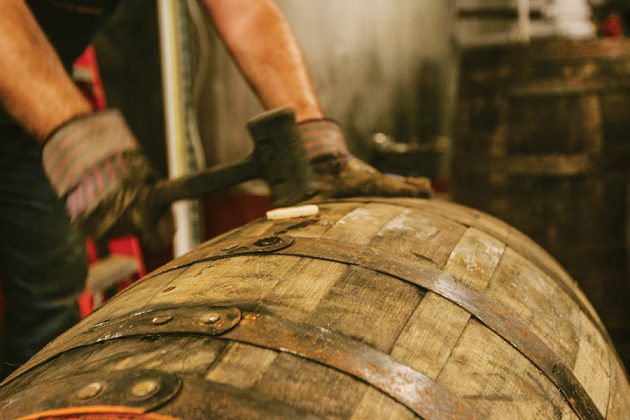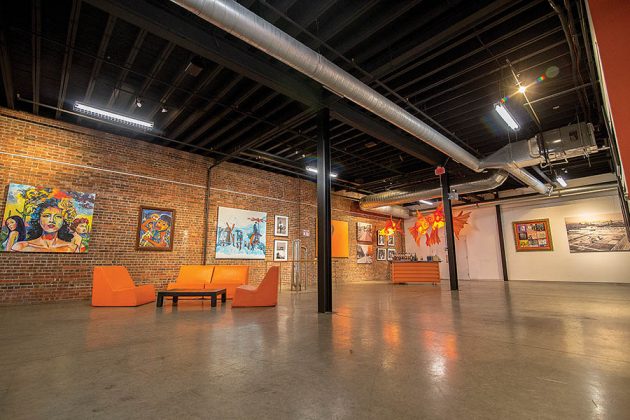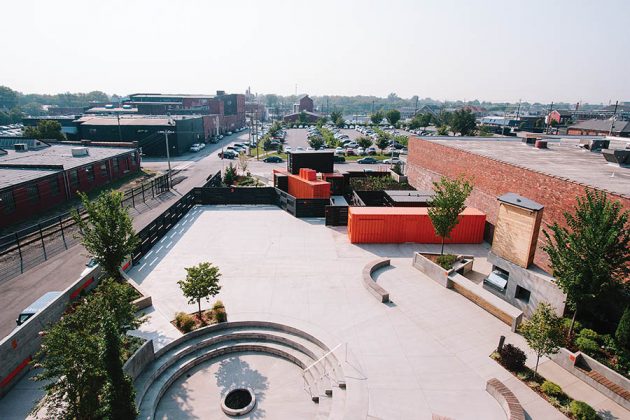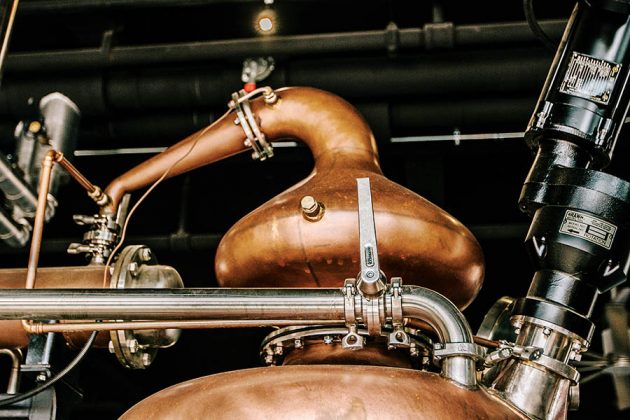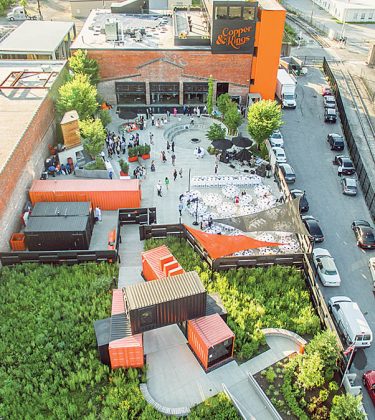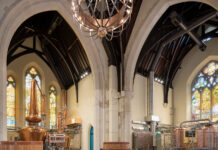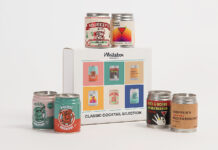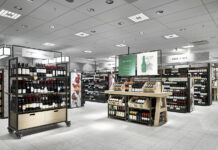There is a fresh wind blowing in the historically reverent city of Louisville. Yes, bourbon still reigns, even controls, the region and longtime distilleries have dominated the culture like venerable parents and grandparents. But a diverse expansion has been growing, flowing out from downtown Louisville.
The likes of Angel’s Envy, Evan Williams, Kentucky Peerless Distilling Company and Jim Beam’s Urban Stillhouse have opened downtown Louisville distilleries and tasting rooms, bringing a microcosm of their distillery experience to those who can’t explore The Kentucky Bourbon Trail from Louisville to Lexington. More distilleries have opened near downtown, including The Bulleit Frontier Whiskey Experience and The Kentucky Artisan Distillery.
A storied brand that goes back to 1870, Old Forester opened a downtown Louisville distillery with its first tours on June 15, 2018 (www.oldforester.com/distillery). A prime location on Louisville’s historic Whiskey Row makes it an easy stop. A dramatic, 44-foot-tall copper still rises through the center of the tightly laid out, 70,000-square-foot space. A comprehensive tour leads you through a full production process from distillation to bottling, including impressive cooperage machines and a 900-barrel warehouse (the majority of production and aging still happens at their main distillery in Shively, KY).
While Old Forester’s state-of-the-art facility showcases a new era for a medium-sized city like Louisville, there is a new breed of urban distillers pushing the boundaries even further in traditional Bourbon Country.
Copper and Kings (C&K) was opened by Joe and Lesley Heron in 2014 in Louisville’s Butchertown ’hood. And they distill not bourbon but brandy. “Obviously, we are the ‘not bourbon’ distillery,” explains Joe Heron. “We make American brandy, gin, absinthe and destillaré cordials. Whilst this sounds somewhat anomalous (Who would start a brandy distillery in Kentucky?), brandy has a very long and robust history in the state. In the late 1800s, there were 400 brandy distilleries in Kentucky and another 100 distilleries that made both brandy and whiskey. In many ways, we are the distillery that is reinventing and reimagining what American brandy is nationally.”
C&K is reimagining a few things. Their bold black-and-orange design, fronted by an extensive patio and monarch butterfly garden, showcases a new kind of Southern distillery. The distillery runs on solar energy (from a 42-panel array covering their roof), repurposes shipping containers for retail and event spaces, uses salvaged wood, pulses water through closed-loop water recycling arteries and offers 50% off a tour to anyone who gets to the distillery via bicycle. Tiki parties and live music keep that front patio lively while sonic aging — trending at a few distilleries globally — infuses their passion for music with aging spirits. Five subwoofers line their basement maturation cellar, infusing pulsation into the barrels, creating a “distillate wave” that purportedly results in increased frequencies between the distillate and the barrel, which they believe enhances taste.
Practicing what they preach has inspired changes in the neighborhood, as neighbors installed another 600 additional solar panels in the area after C&K set the example. “We believe we offer a perspective of Louisville that reflects what Louisville actually is,” explains Joe, “which is a modern, imaginative, dynamic city, beyond the traditional stereotype that is becoming a little cliched. We are about music and art, we are about the future, which is why we spend so much time talking about sustainability. I am not sure that there is a distillery that attacks its business as ferociously as Copper & Kings. Our innovation levels are off the charts and our approach to innovation is conceptual, not literal.”
This translates to the spirits they produce: “We don’t do double-oaked,” says Heron. “We do apple brandy aged in tequila barrels, or Blue Sky Mining single varietal Muscat brandy aged in a Kentucky hogshead [barrel]… We do not plod, we do not jog, we fly!”
Employing traditional copper pot-distillation, non-chill filtering and no added sugar, their spirits are bold and loud, not traditional. They mainly age their brandy in ex-bourbon barrels, but also experiment with ex-Oloroso sherry, beer, tequila, port and wine barrels, to mention a few. While their grape brandies start with classic French brandy varietals (Colombard, Muscat de Alexandrie, Chenin Blanc grapes), they source grapes mainly from California’s Central Valley and Central Coast regions, also working with a Kentucky-grown Vidal Blanc grape varietal.
“Beyond bricks and mortar,” explains Heron, “[Design] is the heart of the company, the brand and the guest experience. It needs to reflect everything about us: our personality, our values, our process and why we are different. It needs to be a destination. It needs to be memorable. It also needs to be a great place to work. It is also designed to be a community asset, where we can host our community with great hospitality. The look is modern, nontraditional and visually memorable. The butterfly/bee garden reflects our values toward sustainability, as do solar panels and repurposed shipping containers.”
This clearly isn’t the Louisville of old. An even more recent newcomer is pushing boundaries in Louisville’s hip-chic NuLu neighborhood, rising dramatically across the street from new hotels and just a block from great restaurants like Royals Hot Chicken or Decca.
Rabbit Hole Distillery opened May 1, 2018, during Derby Week, a grand opening and ribbon cutting that included speeches from no less than Louisville’s mayor, Greg Fischer. Founded by Kaveh Zamanian, the distillery distills and ages rye whiskey (95% rye/5% malted barley), a bourbon (70% corn/10% malted wheat/10% honey-malted barley/10% malted barley) and a straight bourbon whiskey finished in PX sherry casks, as they also offer a London dry gin. “Authenticity and innovation are values that are ingrained in our DNA,” says Zamanian. “There are many off-the-shelf white label whiskeys with fictional stories and no provenance. We are proud to be whiskey makers who consciously chose not to buy sourced bourbon and slap a label on it. We risked it all by developing personal recipes because we value products that are singular and believe that consumers long to know the people behind their products and look for variety rather than uniformity.”
Sleek and modern, the 55,500-square-foot facility will feature an upcoming restaurant and bars, including an upstairs lounge with sweeping, floor-to-ceiling views of Louisville. Zamanian worked closely with architect Doug Pierson (of Pod Architecture + Design) and Prodigy Construction Corp. on a building that stands out on Jefferson Street. An open, lofty space inside houses a multistory, custom Vendome still.
Hiring experienced local distillers who have worked at legendary Kentucky distilleries like Wild Turkey (“The team is more important than the individual,” explains Kaveh), Zamanian’s move to distiller is unconventional, to say the least. A former clinical psychologist who grew up in Iran before his family immigrated to California (San Francisco, then Orange County), he eventually moved to Chicago, where he met his wife, Heather Bass, a Kentucky native. Growing up fascinated with California’s wine industry, Zamanian saw the parallels and possibilities between California wines and American whiskey. But he was a Scotch drinker first, growing to love bourbon more and more as they moved to Louisville with their three children.
Zamanian started to get connected in the bourbon industry as he began experimenting with distilling, naming his distillery Rabbit Hole after the journey of “falling down the rabbit hole,” which is how he would describe where distilling took him. One of Zamanian’s goals is to expand the category of bourbon and rye. “We have four different recipes of bourbon, several finished products on the shelf and in the innovation pipeline,” he explains. “In time, we would love to see American consumers embrace different types of bourbon and American whiskey and have a better understanding of the unique characteristics of each.”
As Louisville has moved a bit slower compared with many U.S. cities in the national dining and cocktail renaissance of the past decade plus, the city has experienced a more aggressive growth spurt the past year or so, right in line with Rabbit Hole’s opening. “We are in the midst of both an American whiskey and cocktail renaissance,” Zamanian explains. “There is synergy between distillers and bartenders and it’s becoming more and more collaborative. Our partnership with Death & Co. [they’re partnering with Proprietors LLC, behind the Death & Company cocktail book, to create a bar and restaurant showcasing high quality cocktails] is an example of a reciprocal and creative partnership that I believe is ultimately good for the industry.”
Heron elaborates on Louisville’s evolution: “This is a great booze town. Always has been. Where it is changing is that the Maker’s & Coke environment is well in the past. It is chock-full of outstanding, inventive bartenders who explore not only bourbon, but brandy, gin and everything else… It needs more bartenders of more diversity (like everyone else), as tourism explodes through the city.”
This explosion, this renaissance in the storied bourbon capital of the world, makes it easier than ever to dig into drink culture, new and old, historical and forward-thinking, without venturing far beyond downtown Louisville.


